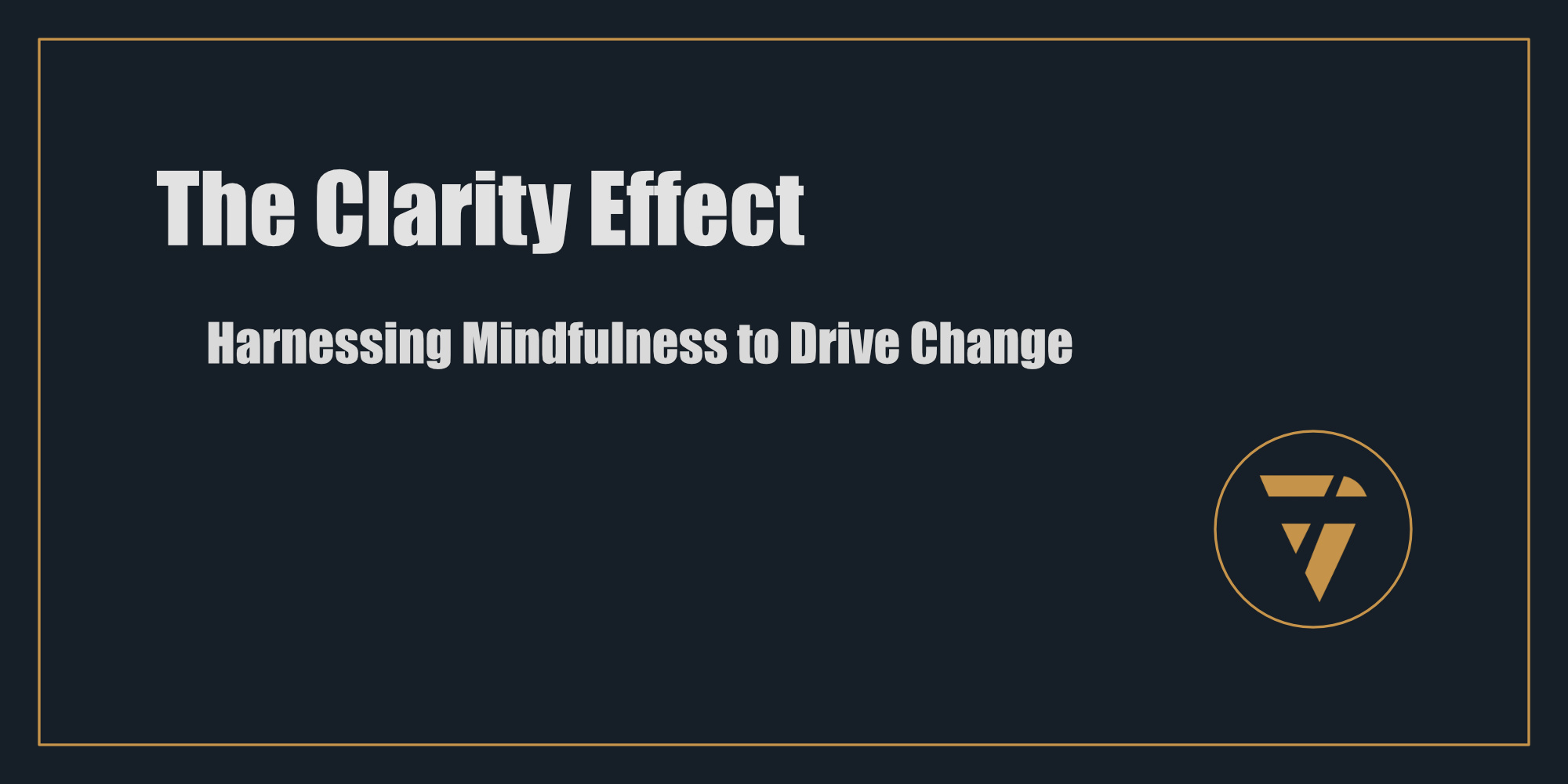The Clarity Effect
Harnessing Mindfulness to Drive Change

What If Your Biggest Development Challenge Is You?
Modern development practice faces unprecedented complexity: competing stakeholder needs, shifting global priorities, and the unrelenting pressure to deliver impact at scale. But what if the most overlooked tool in your toolkit was the way you think and feel while engaging with these challenges? Mindfulness isn't just for personal wellness, it’s a strategic asset for development professionals.
The Paradox of Progress
We live in a results-driven world. Deadlines, KPIs, and funding imperatives push development practitioners to prioritize action over reflection. Yet, research consistently shows that mindful leaders make better decisions, foster stronger collaborations, and sustain higher levels of resilience. Why? Because mindfulness cultivates clarity and focus amid chaos.
The irony is clear: slowing down can actually accelerate progress.
My grandma taught me this moving cattle when I was a kid.
The fastest way to move cows, is slowly.
The Mindfulness Advantage
Mindfulness, in its simplest terms, is the practice of being fully present and aware without judgment. In development practice, this translates to:
- Deeper Stakeholder Engagement: Mindful listening enables genuine understanding of community needs and priorities.
- Improved Decision-Making: By pausing to consider all angles, you avoid knee-jerk reactions that derail projects.
- Sustained Resilience: Mindfulness fosters emotional balance, preventing burnout in high-pressure environments.
Real-World Applications
Here are three scenarios where mindfulness transforms development work:
- Project Planning: Instead of rushing to complete a needs assessment, a mindful team pauses to ensure their methods are culturally sensitive and inclusive. This leads to better buy-in and long-term sustainability.
- Conflict Resolution: When disputes arise between partners, mindful facilitators guide discussions with empathy and focus, ensuring everyone feels heard and valued.
- Fieldwork Challenges: Practitioners encountering unexpected setbacks (e.g., funding cuts, natural disasters) use mindfulness techniques to remain calm and pivot effectively.
Action Plan: Start Small, Think Big
Mindfulness doesn’t require an overhaul of your daily routine. Here’s how to integrate it:
- Daily Check-ins: Spend 5 minutes reflecting on your intentions for the day. What impact do you hope to achieve?
- Mindful Meetings: Start team discussions with a brief moment of silence or a grounding question like, "What is the most important thing we need to address together today?"
- Structured Pauses: Build 10-minute reflection breaks into your workflow to assess whether your actions align with your goals.
What if the missing piece in your development practice is not a new tool or strategy but a new mindset? Start with yourself. Commit to integrating mindfulness into your daily work, and watch how it transforms your team, your projects, and your impact.
Join the Conversation
How are you currently using mindfulness in your work? What challenges or successes have you encountered? Share your insights or reach out for a deeper conversation.
Subscribe for more insights on turning mindful strategies into measurable results.
This Substack is reader-supported. To receive new posts and support my work, consider becoming a free or paid subscriber.
This is what I’m working on. Tell me what you think, I enjoy the conversation! Subscribe and follow the work in real time.
Thanks!
B
Progress isn’t always about doing more, it’s about being more present. Mindful practitioners make better decisions, foster trust, and sustain impact. Slow down, to accelerate your results.
PS -





